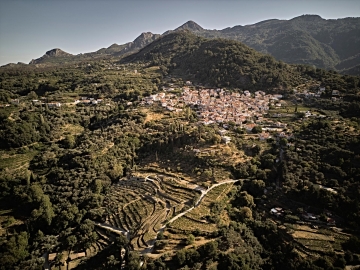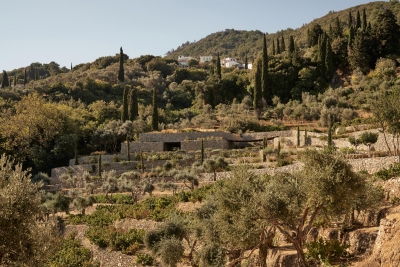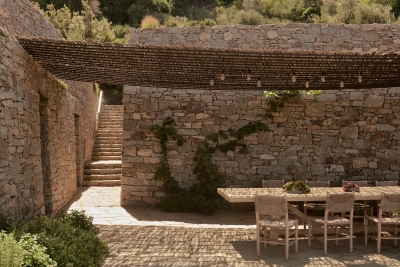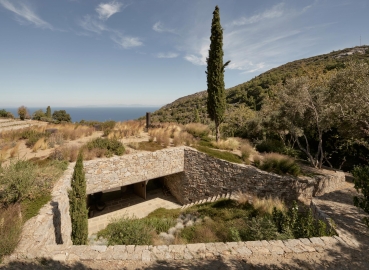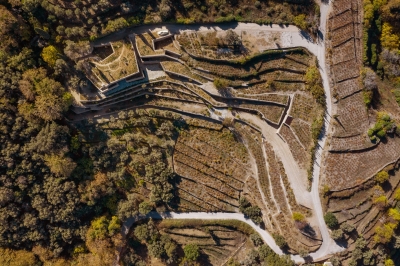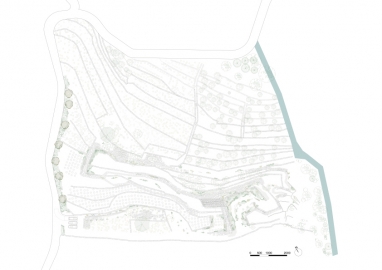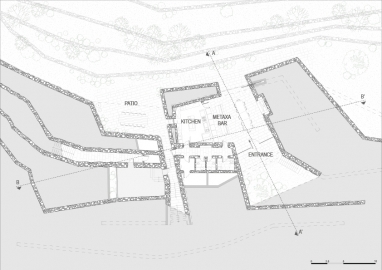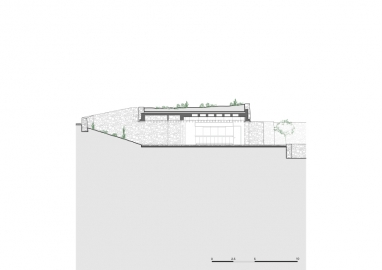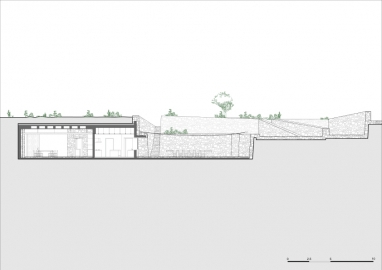Liknon
LIKNON is a landmark that showcases the origins of Metaxa liquor, which are tightly bound to the culture of high quality goods and winemaking in the island of Samos.
The traditional concept of a museum dissolves into a walkthrough around the vine’s habitat.
Aiming to connect the Metaxa brand to its roots, LIKNON is located in a 100 year old vineyard in Samos, an island with a rich culture and a long tradition in high quality goods and winemaking.
In order to positively project onto its future, the brand decided to give a nostalgic look back, to celebrate its origins and unique product and highlight its most precious ingredient, the fortified sweet muscat wine.
This story could not be told in any other place than the very same ancient vineyard where Spyros Metaxas developed his precious spirits based on the fragrant notes of sweet muscat grapes, a specialty to the terroir of Samos.
Spreading beneath the traditional village of Vourliotes, 800m from the sea level and subject to the northern meltemi wind, the vineyard sprawls down the valley on a sequence of stonewall-held plateaus. This man-made productive landscape was formed by collecting and artfully placing the rocks of the site in a manner that tamed the slope into terraces that could be cultivated.
The brief for a brand home that guests could visit in order to explore the locus, the values, history and heritage of Metaxa included the intention to offer an immersive experience into the vine’s environment for a thorough understanding of the past, as well as the direction of the brand. The mission of the design would be to celebrate and enhance the sense of being there and enjoying the unique qualities that distinguish Metaxa and make it a spirit so complex in aromas and character.
The story tells itself as the visitor is invited to explore the different aspects of the vineyard, from the productive processes all the way to the user's enjoyment of the goods that arrive at a well made table.
Our proposal aimed to accentuate and preserve the dominant feature of the terraced landscape, by carving out a route along the stonewalls and embedding enclosures throughout them. As opposed to creating a building, we peppered the terraced valley with structures that stitch onto and take a cue from the pre-existing topography, in order to guide visitors through a curated, yet spontaneous experience of sensorial activations.
The architecture of this scenery is an extension of the productive dry stone terraces where vines grow, and borrows the dynamic and roughness of the natural and traditional productive landscape in order to blend into the valley.
The existing language of undulating stone ribbons is extended to embrace interior spaces and courtyards that stitch subtly to their surroundings, simply by gradually modifying their scale and presence. By employing the original craftsmanship of stone-stacking, as seen in Samos, we managed to recreate the spontaneity of the landscape in geometry and materiality, to blend into the valley with a roughness and dynamic borrowed from the natural and traditional productive landscape.
More than anything, LIKNON attempts to achieve continuity, to approach the already existing with minimum intervention and maximum covering of any man made trail. The very brief aspired to bring knowledge of the primitive practices of winemaking, of handmade landscaping for better natural growth. The concept of the building serves this puristic pursuit by camouflaging the architecture and repairing any wounds to the natural tissues.
Building techniques follow the traditional principles of stonewalls that support and tame the natural slope. Local stone is arranged into spines that create plateaus, where human agricultural activity can flourish. Local craftsmen who were taught this artful technique by their predecessors were employed, thus involving the human workforce of the island during the building phase.

